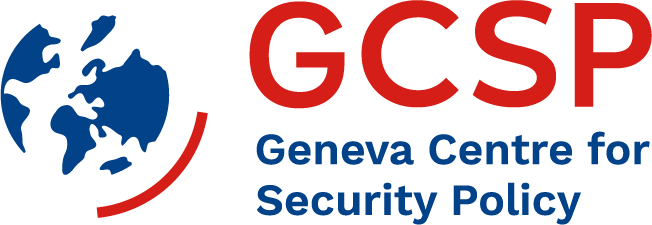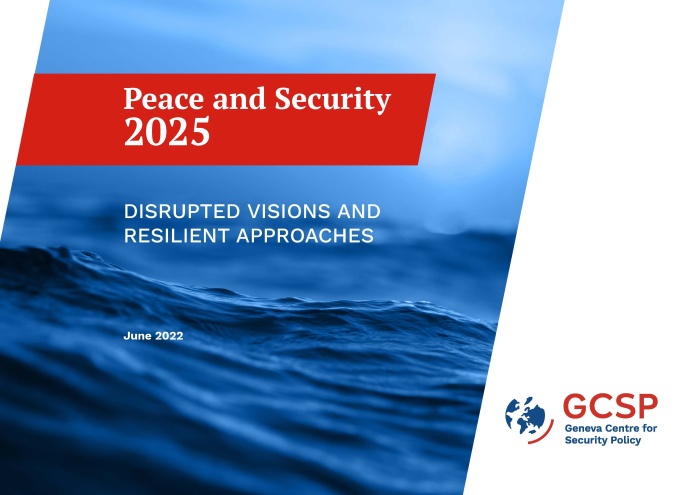Peace and Security 2025
Disrupted visions and resilient approaches
The exact nature of the peace and security environment of 2025 is, of course, unknown, but we have information available to us today and yesterday’s experience to guide us in our attempts to imagine what the key features of that environment might be. This teaches us that surprises will continue to happen. Our attempt to identify what 2025 will look like could simply stop here, and we could approach the next few years day by day and month by month, establish our strategic plans, and constantly adjust them in response to new circumstances as they arise. However, we can go a step further and use strategic foresight to help us creatively and systematically explore how that future may unfold and consider collectively the alternatives available to us for dealing with what happens and its implications. This publication takes the latter approach by asking the authors to determine a vision for particular global regions and realistically and concretely assess how we can achieve this vision (Part I), and present suggestions for how we as professionals in the peace and security domain can collaborate to respond as effectively as possible to the challenges of the next few years (Part II). In that sense, the analysis and suggestions presented here balance realism about the challenges ahead with a proactive and constructive perspective on how best to confront them. It is with this in mind that the subheading of this publication is “disrupted visions and resilient approaches”.
Visions are useful because they pull us forward and motivate action. They are important for creating direction and can be unifying. But if they are too lofty they can make us feel disconnected from the future we are attempting to confront, and in the worst case can paralyse our attempts to generate future-oriented policy and action. With the COVID-19 pandemic and the war in Ukraine as the most recent reminders, any attempt to envision the next few years must be based on the certain knowledge that disruptions will occur. These disruptions can be broken down into two basic types: those that we see warnings of (i.e. by identifying weak signals) and those that are surprises (where crisis management is the only possible response in the short term). Regarding disruptions with warning signs, we need to ask ourselves: do we have an ongoing process in place for monitoring these signs? What will help us to prepare for multiple potential disruptions when resources are scarce? Do we have sufficient agility in our planning processes that will allow us to proactively respond to new warning signs when they arise?
A vision can help us to weather the storms – sometime very large ones – in this environment. In Part I of this publication the authors have applied the foresight method of backcasting to six global regions. This method recognises the multiple pathways that can be taken to achieve such a vision and emphasises the key steps that can be taken to achieve it. This process takes 2025 as the starting point and works backwards to 2022. The process will inevitably be characterised by ups and downs similar to waves in the sea that can be gently undulating or more threatening. Visioning means that we are taking a more proactive approach to the future. We are saying that the future will not simply happen to us in ways that are out of our control, but is something we may be able to shape by striving to fulfil a vision we have created, provided that specific decisions are taken and appropriate efforts are made today.
The second part of this publication presents ideas on how to effectively respond to the peace and security environment envisioned in 2025. The authors of this section do this across three sub-themes: leadership, foresight and governance. Uniting them is the recognition that there are tools in our toolbox based on our experience and knowledge – in particular related to the peace and security community – that can be harnessed to achieve impact. The last few years have tested all of us in different ways in terms of how we engage with one another and the issues we work on. The ground is shifting, and we must be resilient in how we work. Take, for example, global governance in the international security domain. Here countries may need to undertake dialogue with other countries that they have not previously cooperated with and with whom they do not have much in common. Similarly, technology companies may need to partner with governments more and more, while influential individuals may have an impact on a variety of issues in unpredictable ways. This means finding new ways of collaborating and developing trust and a common language with actors from vastly different backgrounds or domains.
Underlying this is the question of how we as professionals handle change. Change can be disorientating, but can also be invigorating. If we refer back to the visioning used in Part I of this publication, being adaptable can help us move a step closer to achieving our desired vision. It may not provide a direct path to that vision, but it can be a step in that general direction and will allow us to hold true to our core ideals and most important objectives. The seeds of the 2025 peace and security environment are in many ways already present in 2022, and we can do more today to encourage the growth of those parts we wish to nurture and stop the emergence of seeds we do not wish to see growing.
Disclaimer: The views, information and opinions expressed in this publication are the authors’ own and do not necessarily reflect those shared by the Geneva Centre for Security Policy or its employees. The GCSP is not responsible for and may not always verify the accuracy of the information contained in publications.

